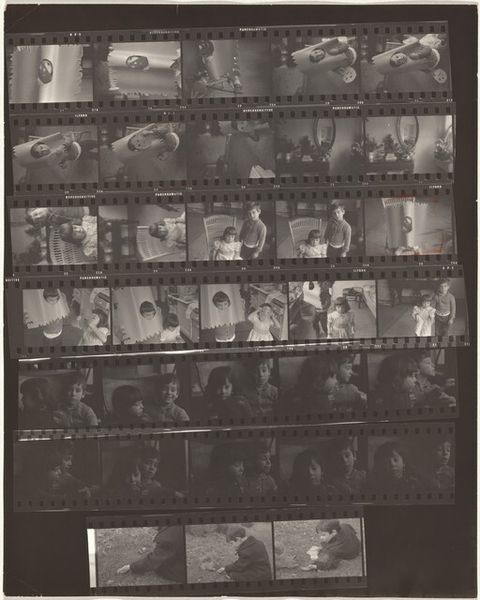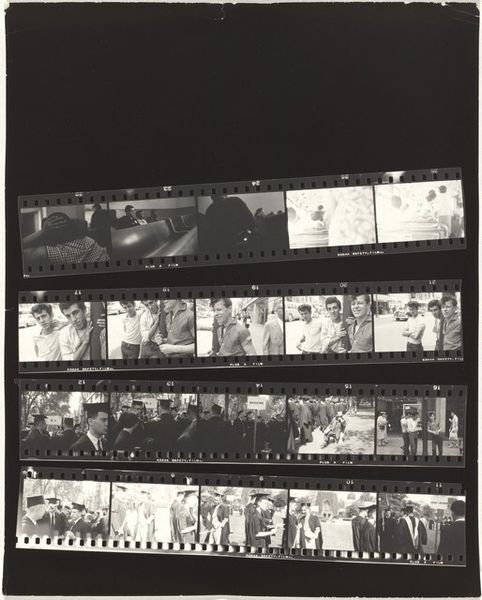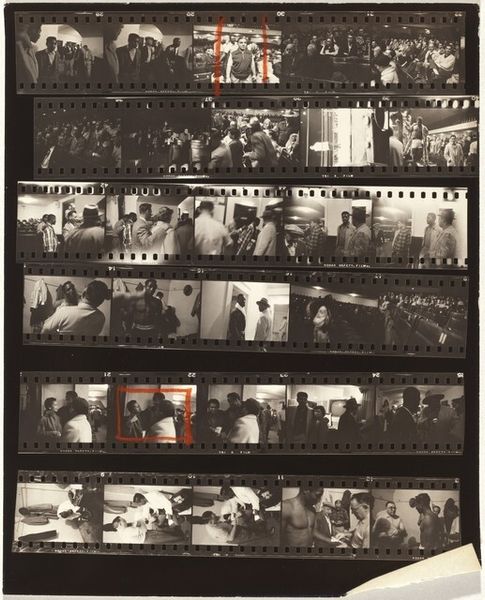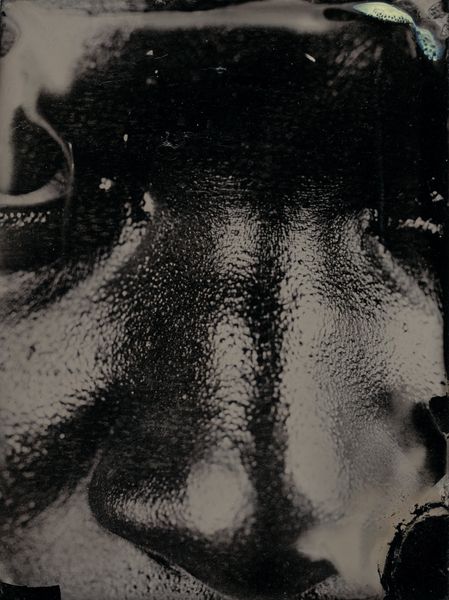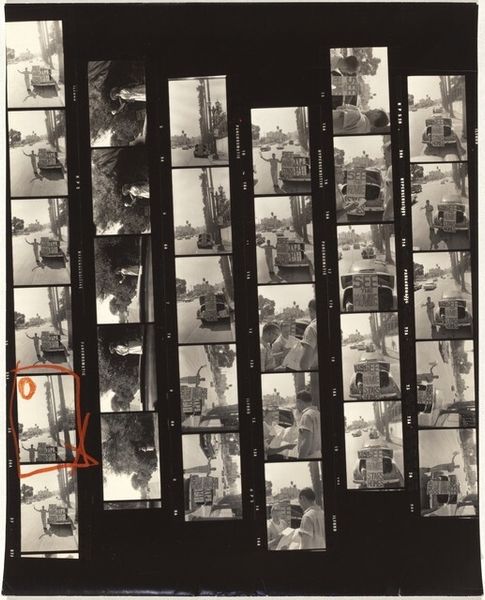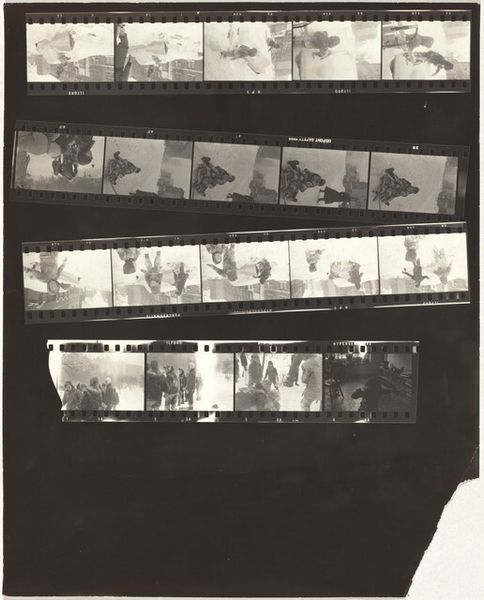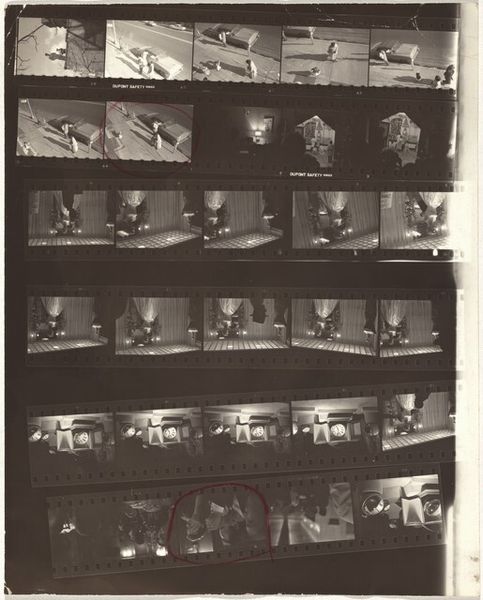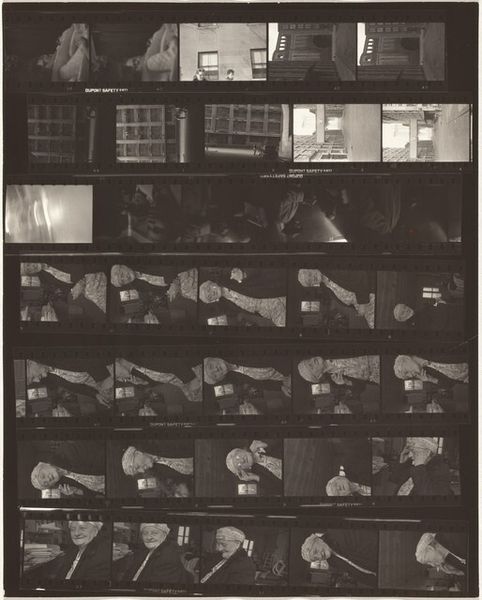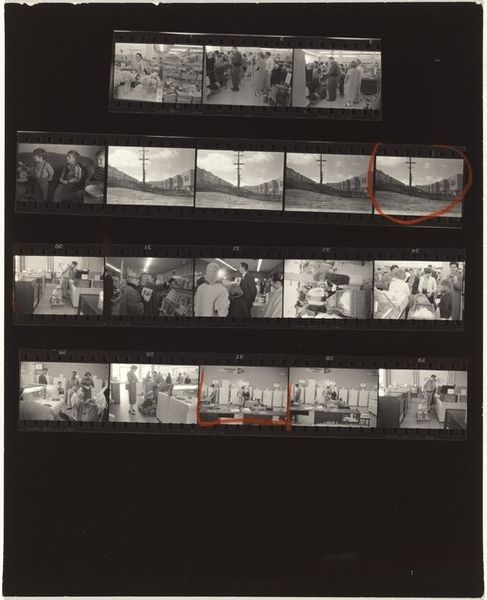
Copyright: National Gallery of Art: CC0 1.0
Robert Frank's photograph, "Peru, page 32," part of a larger visual narrative, captures three children in a tightly framed composition. Rendered in stark black and white, the image uses a narrow depth of field, focusing primarily on the subjects' faces, which are etched with a haunting sense of introspection. The children’s downward gazes create diagonal lines that lead the viewer's eye into the composition, reinforcing a sense of internalized emotion. Frank's structural arrangement, with the children closely grouped, suggests both a physical proximity and a shared psychological space. The use of black and white strips away any color distractions, emphasizing tonal contrasts and the texture of their clothing. The grainy texture of the photograph introduces a raw, unfiltered quality, mirroring the unvarnished realities Frank sought to capture. This aesthetic choice resonates with broader post-war sensibilities, challenging established norms of photographic representation. The photograph functions as a poignant commentary on youth, innocence, and perhaps, the weight of unseen circumstances.
Comments
No comments
Be the first to comment and join the conversation on the ultimate creative platform.
